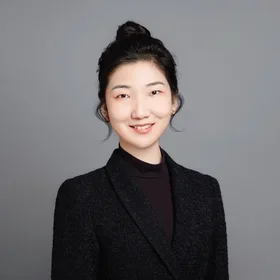In 2008, the year that would eventually usher in a financial crisis and spark the Great Recession, Mobarka Ansari (Moby) was a Wall Street investment banker. Today, experts agree that warning signals about the impending crisis were ignored and some risk management practices were simply not heeded. As the situation unfolded, Moby immediately started her search for a credible enterprise risk management program and found Columbia. Moby earned her master’s in Enterprise Risk Management from Columbia in 2021, and was ranked among the Top 5 graduates in her class, an honor that is based on GPA and faculty votes. Shortly after graduation, Moby accepted a position at Morgan Stanley. She reflects on how Columbia helped her to reach her career goals.
How did you become interested in Enterprise Risk Management?
I lived through the 2008 financial crisis while I was working in investment banking. I saw a lot of storied institutions go under; it was a jarring experience. I continued to work in financial services throughout the massive restructuring that ensued from 2008 to 2011. What became clear was the lack of focus on risk management. That was one of the reasons so many companies went under. As a result, I was drawn to ERM as a career path and started looking for Master’s programs in the field. Columbia’s ERM M.S. program was the best option for me.
What attracted you to Columbia’s ERM M.S. program?
I was blown away by the impressive roster of industry practitioners who serve on the faculty - people who are living and breathing ERM on a daily basis. What better way to learn than from those who are living it every day? Another reason was location. Columbia University is in New York City. There is no better place to immerse yourself in the strategies around risk; everything from M&A and competitor risk to supply chain management, governance practices, and much more.
The program touches on all the types of risks organizations encounter. It gives you a holistic view of what risk management entails. You get a solid grounding in financial, strategic, and operational risk, so that you don’t develop a siloed approach.
You were in the program when COVID-19 hit. How did that impact your studies?
The financial services sector immediately went online and took a 'business-as-usual' (BAU) stance. My professors took the same precautions we did, but they were there for us on Zoom classes every day. Although the classes were virtual, we didn’t experience any disruptions, and we did not lose the essence of the program.
What was your impression of the professors who teach ERM?
Columbia’s professors are top notch. We’ve got people in the program who are officers or heads of departments in risk management. They come directly from Wall Street or from leading corporations. The head of the program, Sim Segal, pioneered value-based ERM. The caliber of experience is excellent, and all of the faculty are approachable. They encourage you to think creatively. I took classes in strategic communication where I learned the fine points of giving a presentation. Professors encourage you to find your voice, and to articulate in a way that achieves something critical— stakeholder buy-in. The focus on strategic communication is a vital tool.
How valuable was your experience with your cohort?
I was incredibly lucky. I was able to join an informal network of risk management professionals, a couple of them in finance who I bonded with right away. We did happy hour together at a craft beer place near the campus. Also, I am married and have two young children. I was able to connect with fellow classmates in similar situations. Having that connection helped me get through the program. There are other working classmates, and you can tap into each other for support.
Post-COVID, we stayed in touch through a social network. I continue to access that community for professional and personal friendships and counsel. An emotional bonus was being among the top 5 in my class. I am happy to say that now I am part of the Top 5 Alumni Network, and that’s been very rewarding.
How have Columbia’s co-curricular offerings, such as the Career Design Lab and special events helped you?
I was able to attend special events such as the CRO Spotlight Series with Chief Risk Officers. We got a lot of incredible people to come in and speak during those events. I was able to watch and take a lot from the content which covered topics including regulatory perspectives and what’s happening in our evolving industry.
The Career Design Lab offers resume building, mock interviews, and seminars about available jobs. Networking opportunities and ongoing learning at Columbia are unmatched.
The outcome for me? I am just starting a new position at a world-class financial services organization.


